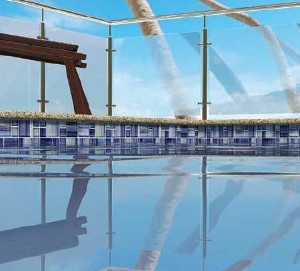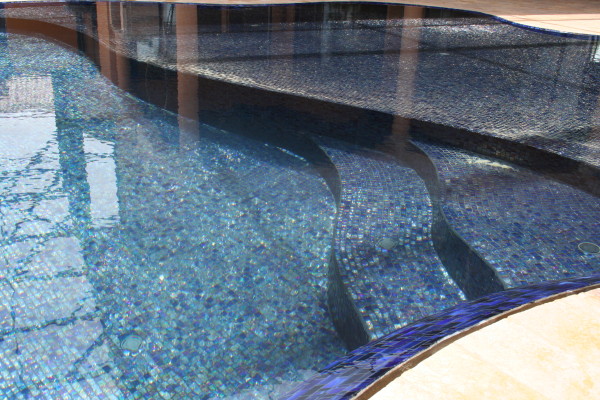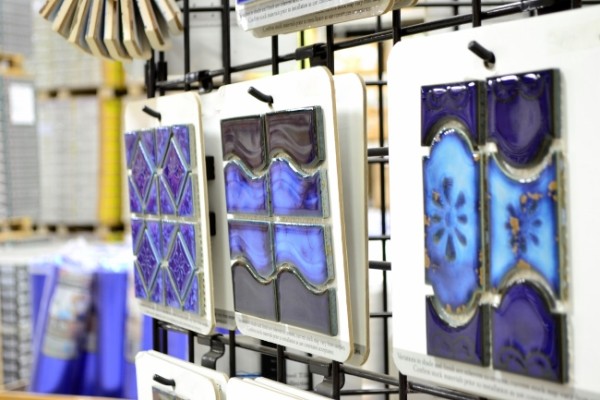Aquatica Pool Tile: Q&A With Tom Cosky
Posted by Kate Spencer on Nov 2nd 2017

Are you familiar with the Aquatica Pool & Spa Tile Collection? It is available at all three Tile Outlets of America stores and features a stunning selection of porcelain and glass mosaic tiles to transform your pool with.
We caught up with Tom Cosky, the International Wholesale Tile program manager for Aquatica Pool Tile to ask him questions about the product line, what makes it so ideal for pools and best practices for successful pool tile installation.
Meet Aquatica Pool Tile's Tom Cosky
TOA: Tom, tell us about yourself.
TC: I have over 50 years of experience in the tile business having worked for my father as a young teenager.
I truly fell in love with tile when it became a fashion item versus a pure boring commodity (such as plain white wall tile).
TOA: How did you get involved with pool tiles?
TC: Early in my career I noticed that swimming pool contractors were pretty much special ordering material on a regular basis, so I purchased inventory to make it readily available and my sales more than doubled.

TOA: Tell us about the Aquatica Pool Tile Collection.
TC: Aquatica grew from the concept that we could cut down larger format tiles into 6” x 6” combined with the sudden popularity of installing glass mosaics into pool waterlines.
We supplemented that with a few Italian-made 6x6 blue tile items along with a nice selection of the traditional oriental glazed porcelains in mosaics and patterns.

TOA: Tom, what makes a good pool tile?
TC: Typically pool tile is made from porcelain or glass.
Products in pools must be able to pass thermal shock testing. According to Wikipedia,
"Thermal shock testing exposes products to alternating low and high temperatures to accelerate failures caused by temperature cycles or thermal shocks during normal use. The transition between temperature extremes occurs very rapidly, greater than 15 °C per minute."
In a pool application (especially on raised beam walls), the tile or glass material can reach temperatures of 160 degrees in the hot summer sun, then drop to 60 degrees as the cool rains hit the tiles.
Also, you need proper pool tile installation.
It is vital that the bonding thinset have as close to 100% coverage as possible such that no voids exist behind the tile or glass. Voids are where mold can accumulate or allow for weakness and potential cracking.
TOA: Can you use any mosaic in a pool waterline?
TC: All porcelain mosaics can be used in pools; it's important to accommodate as complete a back coverage as possible with the thinset during installation.
On glass mosaics, it is important that the coloring be hot fired onto or cast into the glass. Cold applied glass like Pearlesque will not work in a pool.
It is also important that the glue used to apply the mesh on the back side of the tile is not a water soluble glue that will lose its bond when submerged.
We do not recommend using any stone mosaics in pools. They are susceptible to pool chemicals and, additionally, in salt water pools they tend to dissolve or demineralize due to the electrolysis of the salt to make chlorine.

TOA: Can you use glass on the bottom of a pool?
TC: Absolutely! Many of the European pools are 100% glass lined.
TOA: Can you use mosaics under the water?
TC: Yes, with the same cautions as with the waterline use of mosaics:
- No stone mosaics
- Make sure porcelain mosaics have complete thinset back coverage
- Use the right kind of glass mosaics and make sure the mesh on the back side of the tile doesn't use water soluble glue
TOA: What setting materials are required for a waterline?
TC: The thinset needs to be approved for submerged applications, meaning it's a high quality latex modified thinset.
Glass pool tile requires that the thinset be specifically approved for glass and has minimal shrinkage when curing.
TOA: Can you use a ceramic tile in a pool?
TC: Most commercial pools use ceramic body tiles called mud caps for edging of the waterline and steps.
Since these are typically submerged and - if properly installed with 100% coverage - it is not a problem.
Problems occur when ceramic tile is used in areas subject to freeze thaw conditions, and worsened if not installed with 100% coverage of the bonding material.

TOA: What else should we know about tile in a pool?
TC: The tile industry has standards for all tile and glass installations in exterior environments (which includes pools) that say movement / expansion joints must be included in the installation.
>> See How to Install Tile Floors Outdoors - An Overview Tutorial
Unfortunately this is problematic as not all of the installation community adheres to these guidelines and failures do occur, especially with cast / color body glass.
TOA: What is the life of a mosaic or pool tile?
TC: Properly maintained pool tile should last at least a decade or more.
Most problems arise from the lack of proper cleaning where a thick layer of calcium residue builds up on the surface.
We are seeing that cast glass mosaics start failing in 3-4 years if no expansion joints are used between the waterline and the pool coping.
>> See Why Do You Need Expansion Joints When Installing Tile
TOA: Thanks, Tom, for helping us better understand the Aquatica Pool Tile line of products and how to ensure a successful pool installation.
To learn more about pool tiles, read Find Tile For Your Pool and Spa at Tile Outlets of America!
You can also explore Pool Design Ideas.
When you are ready to shop for pool tile, I invite you to visit Tile Outlets of America in Fort Myers, Sarasota and Tampa to explore the Aquatica Pool Tile collection on display.
And don't hesitate to ask our store associates questions about the tools and products needed to successfully install tile in your pool.


